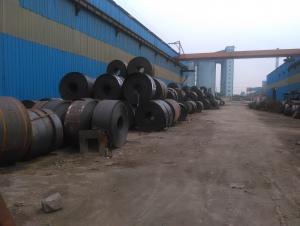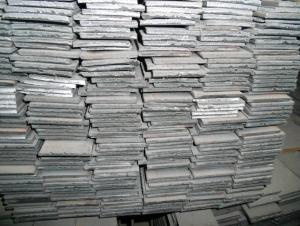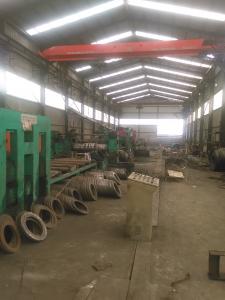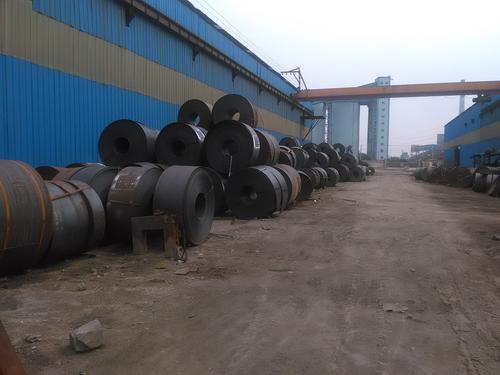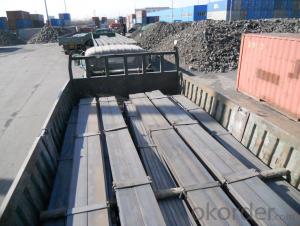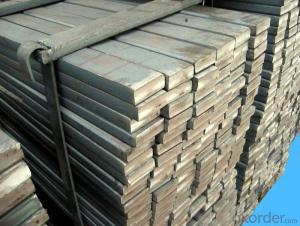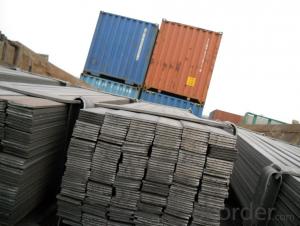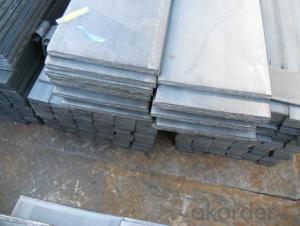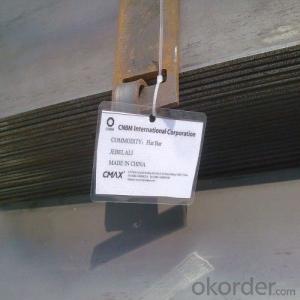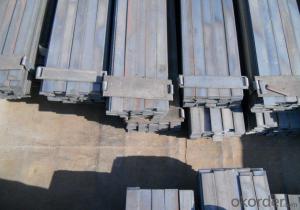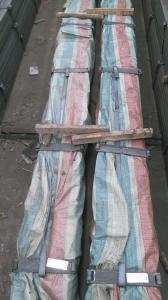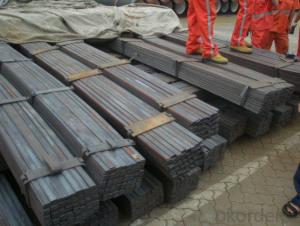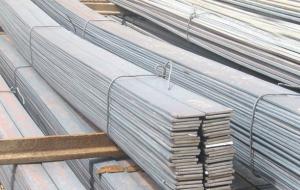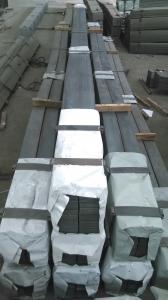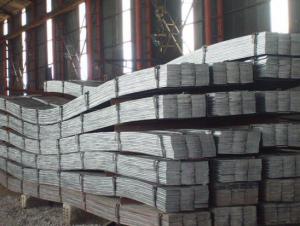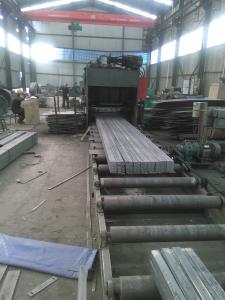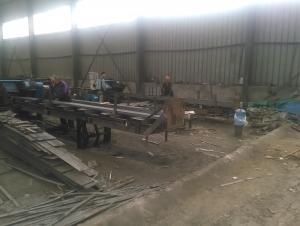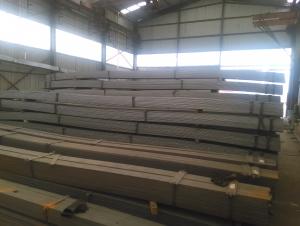Steel Flat Iron Grade GB Q235 Slitted by Cutting Machine
- Loading Port:
- Tianjin
- Payment Terms:
- TT or LC
- Min Order Qty:
- 50 m.t.
- Supply Capability:
- 10000T m.t./month
OKorder Service Pledge
OKorder Financial Service
You Might Also Like
Product Description:
OKorder is offering Steel Flat Iron Grade GB Q235 Slitted by Cutting Machine at great prices with worldwide shipping. Our supplier is a world-class manufacturer of steel, with our products utilized the world over. OKorder annually supplies products to African, South American and Asian markets. We provide quotations within 24 hours of receiving an inquiry and guarantee competitive prices.
Product Applications:
Steel Flat Iron Grade GB Q235 Slitted by Cutting Machine are ideal for structural applications and are widely used in the construction of buildings and bridges, and the manufacturing, petrochemical, and transportation industries.
Product Advantages:
OKorder's Steel Flat Iron Grade GB Q235 Slitted by Cutting Machine are durable, strong, and wide variety of sizes.
Main Product Features:
· Premium quality
· Prompt delivery & seaworthy packing (30 days after receiving deposit)
· Can be recycled and reused
· Mill test certification
· Professional Service
· Competitive pricing
Product Specifications:
Manufacture: slited
Slitting precision (width) : 0.5 mm or less
Raw material: Q235B, Q345B, Q235-1 b
crosscutting precision (length) : 2 mm or less
Processing: the thickness of 2.0-16 mm;
Shear length: 2000 mm above
Wide degree: 15-1250 - mm;
Leveling precision: 1-2 MM square
Packaging: Export packing, nude packing, bundled
Trademark | Rank | Chemical composition (quality score) % | |||||
C | Si | Mn | S | P | |||
≤ | ≤ | ≤ | |||||
Q235 | A | 0.14-0.22 | 0.30 | 0.30-0.65 | 0.050 | 0.045 | |
Q235 | B | 0.12-0.20 | 0.30 | 0.30-0.70 | 0.045 | 0.045 | |
Trademark | Rank | Pulling Test | |||||
Bend PointΔs/Mpa | Tensile Strength | Elongation Ratioδ5% | |||||
Thickness (Diameter) /MM | Thickness (Diameter) /MM | ||||||
≤16 | 16-40 | ≤16 | 16-40 | ||||
≥ | ≥ | ||||||
Q235 | A | 235 | 225 | 375-500 | 26 | 25 | |
Q235 | B | 235 | 225 | 375-500 | 26 | 25 | |
FAQ:
Q1: what is the difference between actual weight and theoretical weight?
A1: All the section steel has two weights: actual weight and theoretical weight. Actual weight is the weighing out when the product delivered from the mill. Theoretical weight is calculated by pieces. The invoice can be based on each of them as your request.
Q2: How do we guarantee the quality of our products?
A2: We have established an advanced quality management system which conducts strict quality tests at every step, from raw materials to the final product. At the same time, we provide extensive follow-up service assurances as required.
Q3: How soon can we receive the product after purchase?
A3: Within three days of placing an order, we will arrange production. The normal sizes with the normal grade can be produced within one month. The specific shipping date is dependent upon international and government factors, the delivery to international main port about 45-60days..
Images:
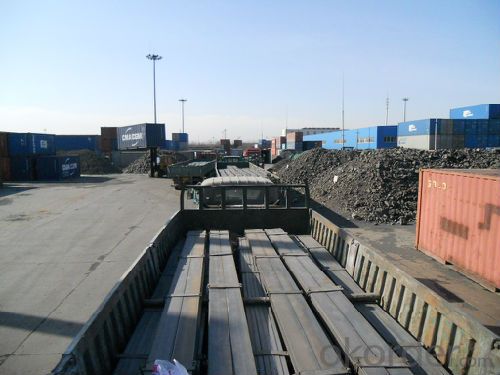
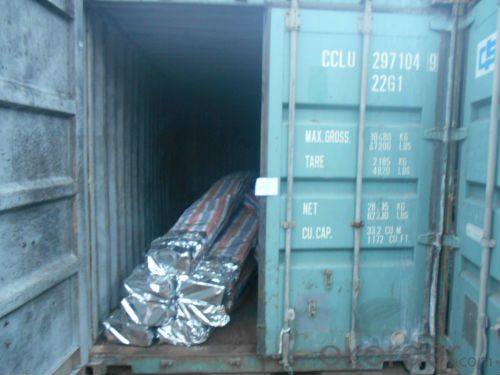
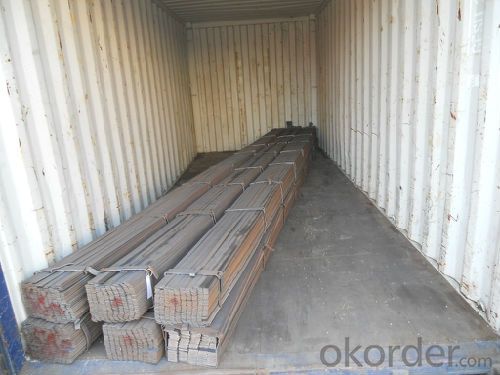
- Q: Are steel flat bars available in custom sizes?
- Indeed, custom-sized steel flat bars can be obtained. Although standard sizes of steel flat bars are readily available in the market, numerous suppliers and manufacturers provide the opportunity to personalize the dimensions of flat bars according to specific demands. This grants customers the ability to acquire steel flat bars that are perfectly suited for their particular project requirements, whether it entails a distinct length, width, or thickness. The customization of steel flat bar sizes guarantees an accurate fit and maximum efficiency for a wide range of applications, encompassing construction, manufacturing, and fabrication.
- Q: How do steel flat bars perform under fatigue loading conditions?
- Steel flat bars generally perform well under fatigue loading conditions. The high strength and durability of steel make it resistant to cracking and deformation when subjected to repetitive or cyclic loading. However, the performance can vary depending on factors such as the quality of the steel, the presence of any defects, and the specific loading conditions. Proper design, material selection, and maintenance are crucial to ensure optimal performance and prevent fatigue failure in steel flat bars.
- Q: Connect the equipotential terminal box to the ground flat iron. Can I use plain flat steel?
- Connect the equipotential terminal box to the ground flat iron and cannot use plain flat steel. What level of ground steel must be used in AC electrical grounding standards, and must be hot-dip galvanized flat steel, the first is corrosion protection, and the second is long acting. Whether or not galvanized is always corroded, all national standards, industry standards, local standards are required to use hot-dip galvanized flat steel. And, depending on where it was buried, the size of flat steel was decided.
- Q: How are steel flat bars shipped?
- Steel flat bars are typically shipped in bundles or stacks. The bars are first stacked horizontally on top of each other, creating a bundle. These bundles are then secured with steel strapping or wire to prevent movement during transportation. Additionally, wooden or steel supports may be added between the layers to provide stability and prevent deformation. Once the bundles are prepared, they are loaded onto trucks, railcars, or shipping containers for transportation to their destination. The bars can also be shipped on pallets, with each bar individually wrapped and secured to the pallet. This method of shipping ensures that the steel flat bars arrive at their destination in good condition and ready for use.
- Q: What are the maximum load capacities of steel flat bars?
- The maximum load capacity of steel flat bars depends on various factors such as the dimensions of the bar, the type and grade of steel used, and the method of load application. Steel flat bars are commonly used in construction, manufacturing, and industrial applications due to their strength and versatility. The load capacity of a steel flat bar is typically determined by its bending and tensile strength. The bending strength refers to the maximum amount of stress a flat bar can withstand before it bends or deforms permanently. Tensile strength, on the other hand, is the maximum amount of stress the bar can handle before it breaks or fractures. To determine the load capacity of a specific steel flat bar, engineers and designers often refer to standardized tables or graphs provided by the steel manufacturer or relevant engineering codes and standards. These resources provide information on the maximum allowable loads for different bar sizes and steel grades. For example, a 1-inch by 1/4-inch steel flat bar made from mild steel might have a maximum allowable load capacity of approximately 3,000 pounds when supported at both ends and evenly distributed along its length. However, this value can vary depending on the specific steel grade and quality. It is crucial to consult reliable sources and consider the specific application requirements when determining the maximum load capacity of steel flat bars. Seeking the advice of a structural engineer or referring to relevant engineering codes and standards is recommended to ensure the safe and optimal use of steel flat bars in any given application.
- Q: What is the surface area of flat steel 100*3 meters per metre?
- 2X (0.1x1+0.003x1+0.1x0.003) =0.2066 with a surface area of 0.2066 square meters.Flat, refers to the width 12-300mm, thickness 4-60mm, cross section is rectangular in shape and with a blunt edge of steel.
- Q: Are steel flat bars suitable for food processing applications?
- Steel flat bars can be suitable for food processing applications depending on the specific requirements and conditions of the application. Steel is a durable and strong material that can withstand high temperatures, pressure, and harsh cleaning agents commonly used in food processing facilities. However, it is important to consider certain factors before using steel flat bars in food processing. One crucial aspect is the type of steel used. Stainless steel, especially those with a high corrosion resistance like 304 or 316 grades, is typically preferred for food processing applications. This is because stainless steel has excellent resistance to corrosion, staining, and bacterial growth, ensuring hygienic conditions. Additionally, the surface finish of the steel flat bars is important. A smooth, polished finish is preferred as it prevents the accumulation of dirt, bacteria, and other contaminants. This aids in maintaining cleanliness and preventing cross-contamination. Furthermore, the steel flat bars should be free from any coatings or finishes that may leach harmful substances into the food during processing. It is essential to ensure that the steel used is compliant with food safety regulations and certifications. In conclusion, steel flat bars can be suitable for food processing applications if they are made from stainless steel with high corrosion resistance, have a smooth surface finish, and comply with food safety regulations. It is always recommended to consult with experts or adhere to industry standards to ensure the suitability of steel flat bars for specific food processing applications.
- Q: Can steel flat bars be used for architectural designs?
- Yes, steel flat bars can definitely be used for architectural designs. Steel flat bars are versatile and durable, making them suitable for a wide range of architectural applications. They can be used for various purposes such as structural support, decorative elements, and cladding. Steel flat bars can be easily fabricated and manipulated into different shapes and sizes, allowing for creative and unique architectural designs. Additionally, steel is known for its strength and longevity, making it an ideal choice for architectural projects that require durability and resilience. Overall, steel flat bars are a popular choice among architects and designers for their functionality, aesthetics, and ability to enhance the overall design of a structure.
- Q: Are steel flat bars commonly used in the construction of industrial buildings?
- Steel flat bars are frequently utilized in the construction of industrial buildings. Steel is an adaptable and long-lasting substance that is extensively employed in construction because of its robustness and capacity to endure substantial loads. In industrial buildings, flat bars are favored as they provide a steady and uniform surface for supporting structures, framing, and reinforcement. They serve as beams, columns, and braces, offering crucial structural stability to the building. Moreover, steel flat bars are easily manipulated and can be tailored to suit specific design prerequisites, making them the preferred option in industrial construction undertakings.
- Q: Can steel flat bars be cold formed or hot rolled?
- The desired outcome and application determine whether steel flat bars are cold formed or hot rolled. Cold forming involves shaping the steel at or slightly below room temperature, typically through bending or rolling. This technique is preferred when precise shapes or sizes are necessary, as it provides greater control and accuracy in the final product. On the other hand, hot rolling entails heating the steel beyond its recrystallization temperature and then passing it through rollers to achieve the desired shape. This method is commonly employed to produce large quantities of steel bars rapidly and efficiently. Hot rolled steel flat bars are renowned for their strength and durability, making them suitable for a wide range of industrial and structural applications. To sum up, steel flat bars can be cold formed or hot rolled, with each approach offering distinct advantages based on the intended usage.
Send your message to us
Steel Flat Iron Grade GB Q235 Slitted by Cutting Machine
- Loading Port:
- Tianjin
- Payment Terms:
- TT or LC
- Min Order Qty:
- 50 m.t.
- Supply Capability:
- 10000T m.t./month
OKorder Service Pledge
OKorder Financial Service
Similar products
Hot products
Hot Searches
Related keywords
